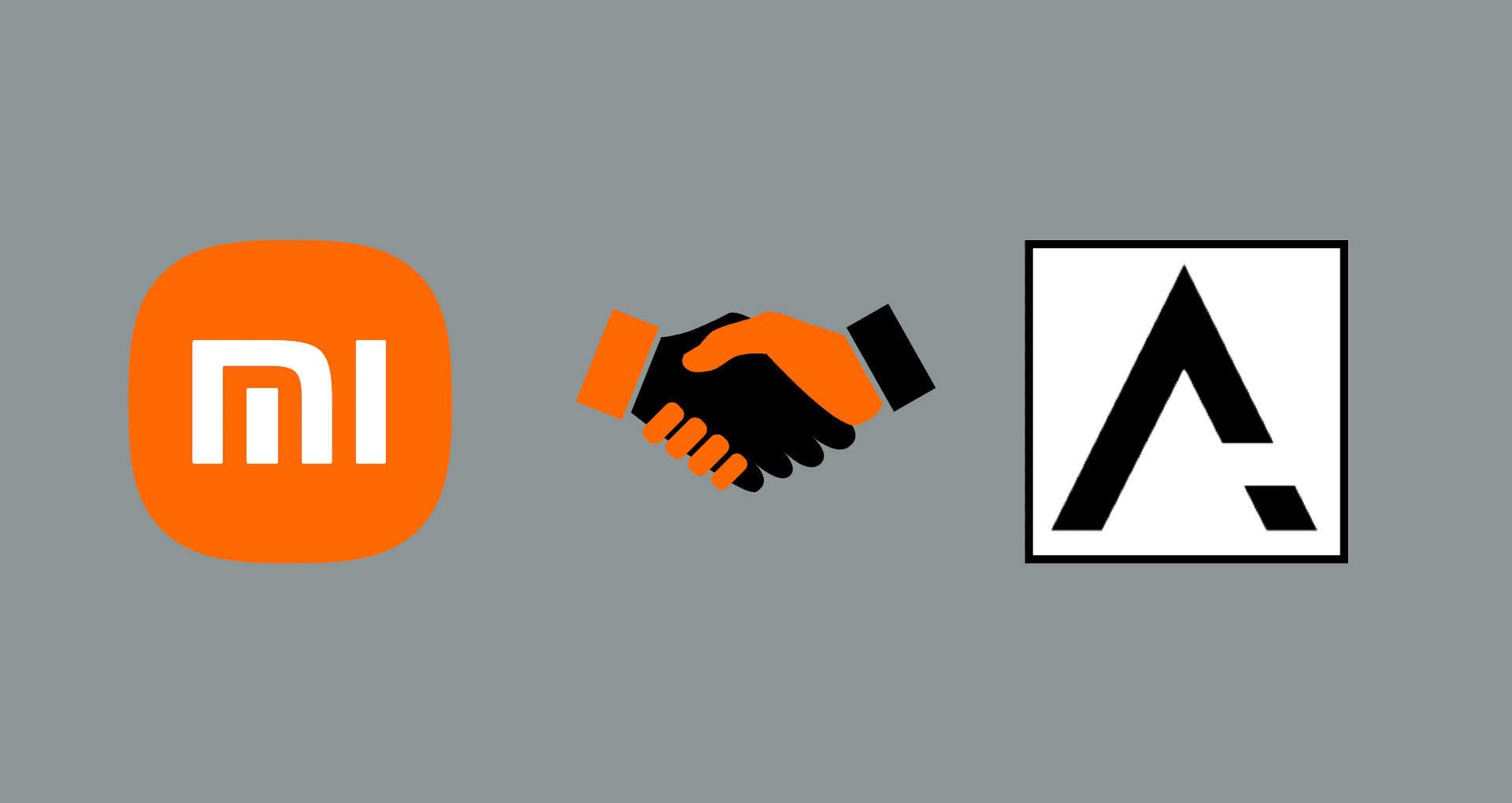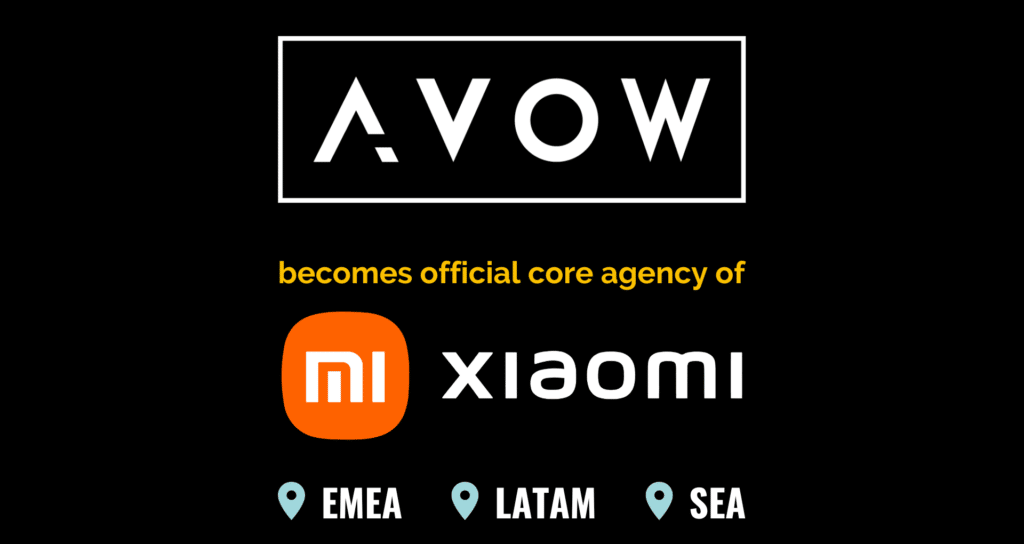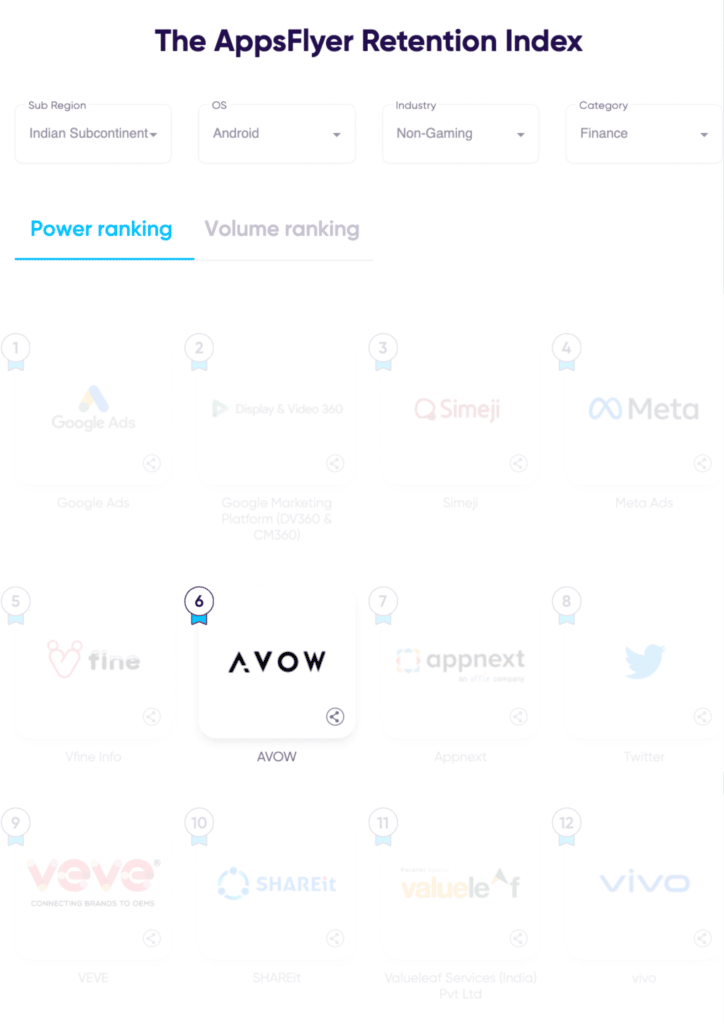Best place to advertise apps
According to the 2023 report of data.ai (previously AppAnnie), the weighted average of mobile usage per user in countries like Indonesia, Brazil, India, Mexico, Saudi Arabia, Singapore, and South Korea in the year 2022 increased to 5 hours per day. As the room for more opportunities paves the way for app developers to create successful brands, marketers need to see this as ‘the calm before the storm’ because the hyper-competition will only get more fierce from here on.
The global consumer spend on mobile apps in 2022 stood at around 167 billion USD. With so much penetration happening in mobile usage in apps, mobile advertisers are hunting for the best place to advertise their app, which can be significantly leveraged using in-app advertising.
In-app advertising as a monetization strategy is highly effective for apps across sizes and the nature of the business, but specifically for apps that fall in gaming, fintech, entertainment, edtech, shopping, and social verticals. Trends suggest that these apps will be in the main spotlight in the year 2023.
How app publishers can advertise with in-app advertising:
In-app advertising is one of the best places to advertise apps. Publishers looking at gaining a competitive edge and acquiring users with more retention capabilities need to -
- Choose the right ad network: It requires the right balance between choosing the most suitable ad network, reaching the precise audience, and being able to communicate effectively through creatives.
- Pick the right ad formats: App publishers can choose from a diverse range of in-app ad formats like rewarded ads, native ads, and banner ads to appeal to their targeted user persona.
- Decide on the pricing model: Each pricing model has its share of risks and rewards. Advertisers can choose from the following pricing models - CPM (Cost Per Mille), CPC (Cost Per Click), CPI (Cost Per Install), & CPA (Cost Per Action).
Read more about the ad networks, ad formats, and in-app pricing models in the blog here.
Three Reasons why in-app advertising is the best place to advertise apps:
- In-app advertising (IAA) as a revenue stream has been promising for app developers in the freemium world of app markets and to be able to target the right users at the right time. Knowing the value of in-app placements, app publishers can garner significant revenue.
- It helps increase user engagement. The advantage for app developers to be able to allow ads that catalyze the flow of their app with that of the displayed ad has increased user retention capabilities. given the ad is placed at the right time with relevance.
- With multiple ad formats to offer, advertisers can pick a strategy that best fits their goals and scales seamless revenue, and strengthens their app’s brand value.
In the recent times, mobile users are navigating through more surveilled privacy regulations and choosing to pay less for apps, and rather opt for free apps with in-app ads, a popular trend that is becoming more common among mobile users. Additionally, the time spent in apps by users has grown to 90%, and just 10% spending their time on mobile webpages. A well planned in-app ad can act as an effective driver of revenue increment. When the content of ads are fluid to that of the app features, the scale offered by in-app advertising is equally rewarding both for revenue and user retention.
Here are the best verticals and places to advertise apps:
- Gaming apps: The mobile game monetization is taking leaps with in-app advertising and mobile gamers seem to be getting highly engaged with apps that they feel are relevant as well. As game app publishers, you want to give the best experience to users without interrupting their journey. This involves choosing the right ad formats, relevant content, and, reaching to the right audience which can all be accomplished with in-app advertising.
- Fintech apps: Apps in this category have gained popularity in the past 2-3 years as crypto trading, neobanking, and stock trading apps continue to soar high in engagement among users across age groups and now also attracting the gen-z audiences at large. Advertising your fintech app with an adjacent app offering and using the right ad placements can help generate high quality traffic and enable real-time conversions.
- Social apps: One of the best ways to advertise in apps is using social media apps that have accumulated millions of users over the years and are invaluably significant for any and every user owning a mobile device. Advertisers can expect an effective and precise targeted advertising on social apps as they have the ability to reach the users at multiple touch points and the average time spent on these apps is relatively higher than other categories.
- Entertainment apps: If there’s one thing that keeps mobile users hooked to their devices, it is entertainment! Users tend to penetrate more on their devices while browsing through entertainment apps, be it streaming services , video apps, or music apps. App publishers can make complete use of banner ads using high quality video content, compelling users to engage and discover more about your brand.
There are other app categories like shopping apps and edutech apps expecting high rise in user engagement in 2023 as mentioned in the blog earlier. Be it educational content or your newly launched shopping app which requires a targeted product ad, both the respective categories are very effective in helping you increase your app install rates.
Additionally, location-based apps can be leveraged by local businesses to penetrate into their vernacular audiences specific to each geographic location. This is one of the best ways to acquire local customers.
By leveraging the right ad networks and ad formats and prompting users to engage with relevant content, app developers can be rest assured to see the effectiveness of their in-app advertising campaigns across verticals of similar intent. In-app advertising is the best place to advertise apps only if app publishers make the most of their advertising campaigns and succeed in executing a scalable in-app marketing strategy.
Event optimization in mobile app advertising
What is event optimization in mobile app advertising?
Event optimization in mobile app advertising is a campaign optimization technique that focuses on maximizing the number of specific user actions (known as events) within a mobile app.
Depending on the mobile app's objectives and user acquisition goals, these activities range from making a purchase to finishing a level. One probable occasion could be a particular and defined initiative that a user undertakes within the mobile app, for example, carrying out monetary transactions, filling shopping carts, enrolling in an account system, accomplishing a level of expertise, or just observing certain pages. With event optimization in mobile app advertising, mobile marketers can increase engagement and drive desired user behavior within their app.
In order to execute event optimization in mobile app advertising, marketers commonly employ either a mobile ad network or a mobile measurement partner (MMP) to monitor user actions within their app in an effort to pinpoint those specific events that hold the greatest significance for their mobile app. They then optimize their advertising campaigns to target users who are most likely to complete those valuable events.
Suppose an app's most prized custom event concerns generating revenue through a user transaction. In that case, advertisers may fine-tune their advertising strategies to target people who have shown interest in buying things in similar apps or who have a history of making monetary transactions.
Mobile app advertisers can significantly enhance their promotional campaigns' efficacy and return on investment by directing their attention towards optimizing for particular events. Employing intricate algorithms to tailor advertisements, targeting precise users at opportune moments with uniquely customized content, immensely elevates the probability of conversion rates skyrocketing beyond previously achievable thresholds.
The advantages of optimizing events can be easily seen. By prioritizing the high-yielding users of a particular app, there will be a surge in commitment and continuity in due course. Pushing users towards completing essential tasks within the app enhances its significance, which contributes significantly to higher levels of retention from customers.
Targeting users who are likely to fulfill key actions is an efficient way to streamline expenses and increase revenue and profitability through wise investment choices concerning advertising budgets.
How to implement event optimization in mobile app advertising campaigns?
- Determine the precise events that are significant to the brand and its offerings. These instances can vary from executing an acquisition to finishing a stage. Therefore, it is crucial to identify those events which bear the utmost importance for both the mobile app and its commercial objectives.
- Collaborate with a mobile ad consortium or opt for the services of an MMP to monitor user activity within the mobile app. Through the sharp utilization of this methodology, one can effectively scrutinize and pinpoint individuals with a considerable propensity towards accomplishing noteworthy feats.
- By channeling efforts into these prime candidates through targeted promotional campaigns, substantial gains may be made in terms of advertising success rate.
- Use targeted advertising to reach users who are most likely to complete those events. By utilizing meticulous and empirical data, marketers can guarantee that financial resources allocated towards advertising are exclusively directed at consumers who possess an optimal likelihood to interconnect with the mobile app and stimulate the desired actions from users.
How can mobile marketers effectively optimize mobile in-app ads? Let's look more closely.
Choose the Important Events: Finding the special events important to the mobile app is the first step in optimizing the mobile in-app adverts. These actions could include:
- finishing a level
- adding items to the app's shopping basket
- making a purchase.
Identifying the events that will be most beneficial to the mobile app and concentrating the brand's promotional efforts there is critical.
Collaborate with mobile measurement partners or mobile ad networks (MMPs)
The next stage is to collaborate with mobile ad networks or measurement partners (MMPs) such as Appsflyer or Adjust, to track user behaviour within the app after determining the events that matter. These partners will assist marketers in identifying the precise actions that are most important for the mobile app and in refining the advertising campaigns to focus on users who are most likely to carry out those necessary actions.
Select users who are most likely to attend events
Mobile in-app advertising campaigns must be compelling if mobile marketers want to reach the right consumers at the right time. With multiple data points and analytics, they can tailor the app's advertising to specific users most likely to complete the events crucial to the mobile app. This tactic allows mobile marketers, advertisers, and publishers to be confident that the advertising dollars are spent on users who are most likely to interact with the app and perform the appropriate objectives.
Personalize ads for specific user groups
Creating tailored ads for specific user groups is another critical component of optimizing mobile in-app advertising campaigns. Advertisers may boost engagement and encourage conversions by customizing the app's advertising content for specific user categories. For instance, advertisers can target and display ads to users who have expressed interest in buying products from other apps like theirs or who have demonstrated a high tendency to transact monetarily in the past.
Test and improve ad campaigns continuously
It's important to evaluate and optimize events for mobile in-app advertising strategies periodically. This involves monitoring the success of these campaigns, identifying how they can be improved, and making data-driven decisions to optimize them further. Mobile marketers can improve the ROI of the advertising budget and ensure that their ads consistently produce the required outcomes by testing and adjusting them continually.
Learn more about in-app advertising and its benefits in this blog.
To sum up, event optimization in mobile app advertising is a powerful tactic that brands and mobile apps may employ to enhance their mobile in-app advertising efforts. Mobile marketers can optimize mobile in-app advertising like a pro by determining the events that count, working with mobile ad networks or mobile measurement partners (MMPs), targeting the relevant users, making unique ads for various user segments, and consistently testing and optimizing mobile app campaigns.
Xiaomi selects AVOW as Official Core Agency in EMEA, LATAM and SEA
AVOW, the mobile OEM user acquisition specialist, has just announced that they have been selected by the largest Android smartphone manufacturer Xiaomi as their official core agency for the entire EMEA, SEA, and LATAM regions.
Through this representation, AVOW will undertake all media sales activities for Xiaomi’s Ad Platform (Mi Ads) across the awarded regions and will interact as the main point of contact to manage a 360-degree execution of mobile ad campaigns on the platform - including media inventory buying, campaign set up, result measurement and campaign optimization.
Brands and agencies looking to leverage the Mi Ads platform will now gain access to exclusive ad formats and reach untapped users from Xiaomi’s diverse user base via AVOW’s international teams, who will offer managed campaigns as well as brand awareness activities.
Mi Ads covers 200+ countries & regions, is supported in 70 languages, and offers reach to 280 million+ quality active users across the world. The platform provides a multi-faceted advertising portal through proprietary apps like Mi Browser, Mi Music, Mi Themes, Mi Video, AppVault, and its official alternative app store GetApps. Through multiple targeting options, Xiaomi allows marketers to accurately locate target audiences and convert their users into brand’s customers.
“We are excited to strengthen our cooperation with Xiaomi through this new and exciting challenge. Our long-term partnership is built on trust and our aligned visions towards the contribution to the mobile advertising industry. This new chapter in our alliance will help us offer fresh and unique opportunities for mobile marketers to tap into some of Xiaomi’s most extensive markets in EMEA, SEA, and LATAM”, says Robert Wildner, CEO and Co-founder AVOW.
Xiaomi's media sales expansion strategy is to outsource these activities by selecting strong core partners to represent them in specific regions. This partnership comes at a crucial time, as marketers looking to promote apps are bound to rely upon third-party advertising sources with very little or no guarantee of fraud detection, booming costs, and user engagement. Xiaomi’s OEM advertising placements allow app marketers to achieve incremental user growth from customers who are brand loyal to Xiaomi in these local markets.
Headquartered in Berlin, Germany, AVOW’s reach and ability to deliver growth results for clients have allowed it to expand its global footprint, opening offices in India, Indonesia, China, Vietnam, Brazil, Philippines, and Russia to cater to its large client base in those local markets.
Reach out to AVOW's team of experts to learn more about how mobile apps can leverage this exclusive partnership and scale their advertising spend across the regions of EMEA, LATAM, and SEA.
AVOW's mobile OEM advertising solutions can help D2C brands ace their performance marketing game during festive season
Since March 2019, COVID-19 has restricted businesses from taking a full-scale marketing approach due to conservative market behavior. However, mobile user penetration has grown enormously since the same period in India due to the increase in usage of internet services and the affordability and economic viability of smartphones. The upsurge in the use of mobile technology has led to a fuelled growth in the consumption of D2C mobile apps. Moreover, with mobility and in-person interactions returning to life in 2022, consumer behavior toward D2C brands is also drastically growing.
As the festive season in India is about to hit the roof, D2C brands are expected to garner significant attention and demand, and consumer sentiment looks upbeat, particularly in tier 1 & tier 2 cities. For these brands, the expectation during such seasonality means growth in revenue through performance marketing, as consumer brands during special promotions and festivals in India are proven to generate more business.
A report suggests a 68% increase in Indian shoppers this festive season, and nearly 7 in 10 shoppers intend to shop on D2C sites. While observing the current trends, there is increased competition between D2C brands as they become more focused on their ad spends to maximize growth during this festive season despite the concerns over rising inflation. As consumers buy more from the brands directly, either through their website or app, D2C brands will leave no stone unturned to scale their app marketing efforts and get some fresh eyeballs with a positive outlook on engagement and retention.
Acquiring loyal users for your D2C brand via app marketing…
Indian D2C brands are thriving with an omnichannel marketing avatar which includes a mix of DOOH, TV, and digital ads using search and social, print, and more. While measuring the success of traditional marketing methods is difficult, one can effectively measure the ROAS (return on ad spend) with performance marketing through mobile OEM (Original Equipment Manufacturer) app marketing.
Leveraging OEM app marketing strategies to acquire users during this peak festive period can give D2C brands a more lucrative ROAS and incremental user engagement. In addition, with mobile OEMs, D2C marketers can tap into untapped audiences and help them unlock a newer and more efficient revenue stream.
Mobile OEM advertising offered by mobile OEMs such as Xiaomi, Huawei, Oppo, Vivo, and Samsung can help D2C brands with –
Enabling app discoverability: D2C brands can leverage appographic targeting to target users with similar apps and unique app interests beyond category during the festive season. Appographic targeting with mobile OEMs is potent in providing high-value users and acts as a powerful strategy for app marketers.
Better Visibility: To increase ad visibility during special promotions or festivals like Diwali in India, D2C mobile apps can take full advantage of “app store featuring” with display formats such as Splash and Interstitial ads. In addition, mobile OEMs offer unique ad placements for special shopping and discount cards during the festive season.
Increased re-engagement: Few mobile OEMs offer down-the-funnel re-engagement for m-commerce apps with special placements during the festive season to regain static users who have been inactive on the app. For such occasions, featured custom placements are highly recommended for increased brand awareness. In addition, D2C apps can also get consultations about the kind of creatives that best work for the festive season to get the maximum reach and engagement.
Tips to get the best out of your app marketing strategy during the festive season
- While developing creatives for display ads, as an app marketer, you must be highly attentive to ensure that your brand resonates with the color scheme and fonts. It best helps the users to identify and engage with the brand.
- Since mobile media buying inventories get increased bidding from app advertisers during the festive period, D2C marketers need to book high-impact branding placements on a timely basis.
- Before the pricing increases, D2C marketers need to plan media buying effectively.
- Explore PMP deals at private marketplaces with mobile OEMs where app marketers can bid on high-performance-based suggested inventories.
Reach out to our team today to learn more about how AVOW’s mobile OEM advertising solutions can help your D2C app scale its user acquisition efforts.
AppsFlyer Performance Index 15 - AVOW ranks in the top 10 of Retention Index
In a post-pandemic scenario with rising inflation and economic downturns, making the right choices is no straightforward job for mobile and app marketers, as mobile advertising is transforming at its core.
The fifteenth edition of AppsFlyer Performance Index is out, and AVOW has again ranked in the top 10 – this time in the Finance category. We are super proud to have been recognized and ranked as one of the top 10 players in the AppsFlyer Retention Index for both power and volume rankings in the Indian subcontinent region under the non-gaming industry in the finance category.
The AppsFlyer Performance Index Edition 15 analysis is investigated in both Android and iOS through 27 billion app installs, 500 media sources, and over 19000 apps.
AVOW has been consecutively ranking in the AppsFlyer Performance Index for the third time in a row now!
AVOW has also been selected by Xiaomi as its official core agency for the entire EMEA, LATAM, and SEA regions – making it the only agency to partner with Xiaomi in all three awarded regions.
Reach out to our team to know how you can scale your app’s user acquisition campaigns with AVOW and contribute to your app’s overall growth.
Importance of mobile OEMs in the app marketing industry
With the steady growth in how users engage with and spend time on mobile devices, the mobile marketing industry and its app ecosystem have constantly evolved and advanced over the years. It is estimated that smartphone users worldwide will surpass 6.5 billion by the end of 2022. In India as well, the number of smartphone users is expected to double to 829 million in 2022 from 404.1 million in 2017 (Source- Cisco). Such an upsurge in usage enables both opportunities and challenges for app developers to create, launch, personalize and promote apps that best fit the needs and demands of billions of mobile phone users.
In present times, to connect and engage with smartphone users, businesses not only adapt innovative marketing strategies but also run advertising campaigns to target specific users via personalized communication. This is accomplished using a diverse mix of app user acquisition strategies where mobile marketers place their budgets on different advertising channels. A prominent example includes alternative app stores offered by mobile OEMs (Original Equipment Manufacturers) like Huawei, Xiaomi, Oppo, Vivo, OnePlus, Samsung, and Realme, enabling app growth and staying on top of the competition.
Understanding the promising opportunities with mobile OEMs for app marketers…
When app developers release new apps, they are highly impacted during the pre-launch and discovery stages to gain visibility – after all, nearly 4k apps are added to the Google Play Store daily. Marketers and advertisers compete against each other to get better engagement and maximum reach in their respective app verticals. This makes it increasingly difficult for apps with pocket-friendly marketing budgets to compete against similar apps.
Hence, mobile marketers are looking for new ways to elevate their mobile marketing mix from traditional and third-party advertising channels to a more sophisticated ecosystem, such as alternative app stores. These alternative app stores are brand-safe, cost-efficient, and fraud-free and target users based on similar interests beyond category to increase app install rates.
Mobile OEMs help in four pivotal ways…
- Market presence – An increasing number of Android mobile OEMs like Xiaomi, Huawei, Oppo, Samsung, and Vivo dominate Asia’s smartphone industry with a huge market share of 73.38% as of August 2022. These devices are now being sold in every small to large electronics retail store and are advertised online and offline at a similar scale as the previous market leaders in Asia. As an example, Vivo – one of the top five mobile OEMs worldwide, announced its partnership as the official sponsor for the FIFA World Cup Qatar 2022.
- Accessibility – Alternative app stores offer not only the look & feel of a smartphone brand but also awaken an intrinsic feeling of loyalty and trust for users to engage with them. In addition, the simple steps of downloading applications from a smartphone’s app store make it effortless and uncomplicated for users to find relevant resources to fulfill their needs.
- Cost-effectiveness (lower CPI) – Unlike the cost models involved in third-party services running ads on Cost Per Click (CPC) pricing, mobile OEMs offer better ROI with the Cost Per Install (CPI) pricing model. Here, the advertiser pays the publisher every time users install the app, thus, proving to be more result-driven for apps in an effort to drive more installs than just clicks.
- Fraud-free – Mobile OEMs offer a fraud-proof advertising ecosystem to help scale a brand’s user acquisition efforts. No additional layers or middle parties are involved between the budget holder and the mobile OEM itself, making it highly reliable for advertisers to place their trust in OEM app marketing.
Preloaded apps are gaining popularity…
Mobile app marketing is now more focused on building loyal and relevant users than just getting mere installs. Now, there is a possibility that preloaded apps can be run with personalized recommendations on mobile phones. This has changed the notion of preloaded apps being entirely unwanted to becoming a valuable source of user engagement.
The biggest advantage of preloaded apps is that the user does not have to look for apps on the app store. Mobile marketers who are looking for ways to promote their apps directly on mobile OEMs should see preloaded apps as one of the most effective, exclusive, and direct routes to do so most reliably. Moreover, since the app is available to users by being on the device first, it gives them strong visibility to be a ‘go-to’ app for a fresh set of users.
Mobile OEMs are a powerful resource for mobile marketers to scale their advertising mix
Mobile OEMs, as we see them through the lens of the mobile advertising world today, are proving to be a successful advertising channel for user acquisition. They are enabling mobile marketers and app publishers to garner fresh users for their mobile apps from more than 1.5 billion daily active users (DAU).
Harnessing the power of mobile OEM and considering it as a powerful advertising tool and a new-age solution will continue to empower brands with various advertising opportunities throughout a device’s lifecycle and present them with a new and sustainable user acquisition channel to take advantage of.
We are ready to help you scale your user acquisition and app marketing goals, are you? Reach out to us by filling out this form and get solutions to all your app marketing challenges.







